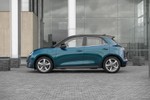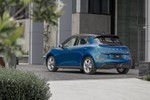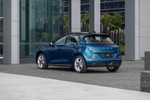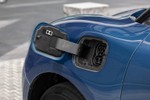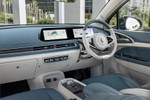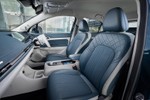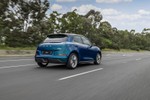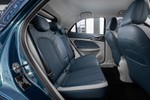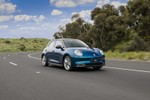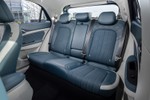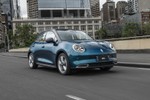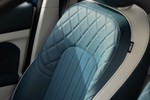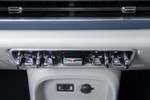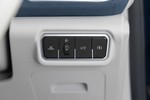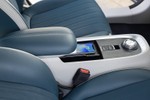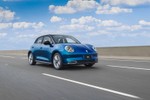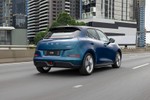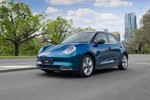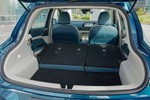GWM Ora (2023) International Launch Review
Haval Motors SA, which only recently added hybrids to its line-up, will soon take the huge step to offer an all-electric brand in South Africa. Could the GWM Ora be our market’s first truly affordable battery-electric vehicle? We drove the model in Australia.
Haval Motors SA – the local subsidiary of Chinese automotive giant Great Wall Motors (GWM) – looks on course to have a bumper year in 2023. S- and Hybrid (HEV) versions of the Jolion small crossover have reached showrooms and luxury off-roader brand Tank is coming soon, with the 300 model pencilled in for a mid-year arrival. Also in the product pipeline: an all-electric car… meet the oh-so-cute GWM Ora.
MORE: What’s next for Great Wall Motors / Haval in South Africa?
What is a GWM Ora?

Now, there’s been some confusion regarding the newcomer’s name. Ora has existed as the all-electric sub-brand of the GWM group since 2018 and it has produced a variety of models; in other markets, the hatchback you see here is known as the Good- or Funky Cat, while a retro-inspired (think New Beetle-like) variant is named Punk- or Ballet Cat, and the fastback version bears the moniker of Lightning Cat.
At the time of writing, the naming convention for our market wasn’t finalised, but we reckon Mzansi will follow the Australian market’s example – the hatchback will be called the GWM Ora (effectively make, model and derivative rolled into one), while the sportier-looking fastback will bear the Ora Sport badge.
In images, the GWM Ora looks like a cute little city car, but it is, in fact, more of a compact model: 4 235 mm long, 1 603 mm wide and 1 825 mm high, with a smallish 211-litre load bay. Those dimensions make it roughly the same size as a Volkswagen T-Cross! If you’re comparing like-for-like, the Ora is bigger than its natural rival, the Mini Cooper SE. The rear styling is quirky and, indeed, funky – a great talking point.

The GWM Ora produces peak outputs of 126 kW and 250 Nm and is available with either a 48-kWh or 63-kWh lithium-ion battery. Naturally, one of the most important questions concerns the model’s range.
The 48-kWh Ora is claimed to have a range of 320 km based on WLTP, while the 63-kWh version is said to travel 100 km further (420 km). Performance? Ora reckons you’ll be able to zip from 0 to 100 kph in 8.3 sec and, as for charging, you can go from 10-80% in 41 minutes (when using an 80-kW DC charger).
Comparisons with the Mini Cooper SE are inevitable; the Oxford-based brand’s battery-electric vehicle (BEV), which we reviewed last year, produces 135 kW/270 Nm and has a 33-kWh battery, which gives it a theoretical range of 215 km. The Mini’s range is notably shorter than what’s claimed for the GWM Ora, although it’s a second quicker from 0-100 kph (7.3 sec). The cars’ stated luggage capacity is identical(!) and the Cooper SE can be recharged from nearly 0% to 80% in 35 minutes (when using a DC charger).
MORE: Browse the latest Haval prices and specs here.

First impressions of the GWM Ora
To reiterate, photos really don’t do the (adorable) GWM Ora justice. It’s a far bigger car than I expected and, courtesy of its dedicated electric-car platform, it has superior interior packaging to a similarly sized car with an internal-combustion engine (ICE) or a BEV based on a car that is usually powered by an ICE.
When I climbed inside the GWM Ora, I was immediately impressed with its head- and shoulder room, as well as its spacious rear bench. I’m 1.91 metres tall and was able to sit comfortably behind the driver’s seat that had been set up for my driving position – this a genuinely family-friendly compact hatchback!

There’s a plush, modern and upmarket feel to the GWM Ora’s cabin. The seats are trimmed in diamond-stitched leather and faux suede – a classy touch, even if some of the plastics are, well, a bit plasticky. All in all, fit-and-finish is great; the transmission dial and some of the switchgear are from Haval models.
While the standard features list of SA-spec vehicles has yet to be confirmed, the Australian-spec GWM Oras we drove came fully loaded. Features included 18-inch alloy wheels, a 10.25-inch infotainment touchscreen and digital instrument cluster combo, USB ports front and rear, a wireless charging pad, selectable drive modes, LED lighting, climate control (auto aircon) and 60/40-split folding rear seats.
There’s a pleasant minimalist feel to the infotainment system, which has a crisp, clear display. Thanks to its simple and uncluttered menu layout, its user experience feels similar to that of a high-end smartphone.

What’s more, the cars were fitted with an abundance of semi-autonomous safety features, including adaptive cruise control, traffic-jam assistant, lane-departure warning, lane keeping- and smart collision avoidance assist, rear cross-traffic alert with auto emergency braking, fully auto parking, a reverse-view and 360-degree cameras, plus traffic-sign recognition. The Ora has a 5-star Euro NCAP safety rating.
What’s the Ora like to drive?

Our test drive took place at the Anglesea Automotive Research Centre in the State of Victoria, southwest of the city of Geelong, and it was conducted on a test track that simulated an open road. I know, I know, it sounds like a rather boring course, but at least there were a few corners towards the end of the route…
One of the coolest things about the GWM Ora is that it has no start button. You simply climb in, close the driver’s door, put your seatbelt on, engage Drive and away you go. Like most city-biased BEVs, the car’s handling is light ‘n’ easy at lower speeds, but if you make it corner at a brisk pace, it tends to lean a bit.

In fact, it was surprising to experience so much body roll in the GWM Ora, because one would expect the BEV’s relative heft and ultra-low centre of gravity to negate such a top-heavy feeling; it feels quite tall.
The steering could be a bit quicker and more responsive, but we appreciated that the ‘wheel needed little effort to twirl – this car is primed for city driving! As for the ride quality, it felt on the firm side of pliant, but our test route consisted of very smooth roads, which didn’t reflect real-world conditions. We also noticed quite a bit of road noise, but we’ll look out for this again when the model makes its local debut.
Again, we didn’t spend much time at the ‘wheel of the GWM Ora (not enough to get to know it well), but it was a good chance to get a preview and early understanding of what’s coming to Mzansi later in 2023.
Summary

Given South Africa’s unreliable electricity supply, the announcement that a new electric-car brand is coming to our market may seem, well, ill-timed – and we expect the news to be lambasted on social media – but if you think deeper, the market needs a well-priced and nicely-packaged BEV hatchback.
There are now many more public charging stations available (in our major metro areas) than you might realise and some of them even have solar backup. BEV customers know exactly what they’re getting into and most will have adapted their lifestyles accordingly (to have some form of alternative power solution).

Of course, if the GWM Ora is to succeed, its local pricing and, to a lesser extent, its range will be key factors. As long as (already expensive-to-make) BEVs are subject to higher import duties in South Africa (whereas they’re subsidised in developed countries), affordability is always going to be a sticking point.
However, Haval Motors SA will have a golden opportunity to steal the title of “South Africa’s cheapest all-electric car” from the Mini Cooper SE which, at R742 000, has a claimed range that is some way off the Ora’s stated figure. If GWM could bring Ora in for, say, closer to R700k, it’d be an intriguing proposition.
The GWM Ora does have its quirks, but its novelty and cuteness factors are undeniable – we can’t wait to drive it on local roads. Despite the negativity around electric cars in South Africa, Haval Motors SA may reap the benefit of joining Mini in the compact BEV market sooner rather than later. Watch this space!
Related content:
OPINION: GWM’s Ora Cat EV could offer 500 km range for only R600k
